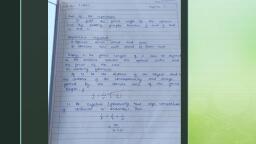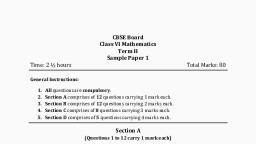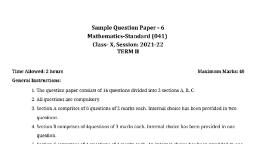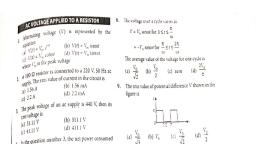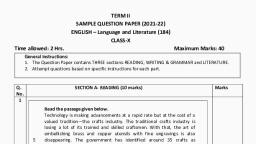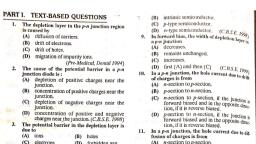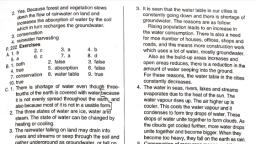Question 2 :
<p>Chromosome reaches their respective poles in which of the following stages of mitosis?</p>
Question 3 :
The enormous diversity of protein molecules is mainly due to the diversity of
Question 4 :
How many equational divisions are necessary in a cell of onion root tip to form 128 cells?
Question 5 :
<p>Many physiological functions are performed by proteins. One such function involves that some proteins discharge</p>
Question 6 :
Which one is false about the diagram?<br><img style='object-fit:contain' src='https://storage.googleapis.com/teachmint/question_assets/NEET/5e6f4207815cf10b358ce1ae' height='147' width='245' >
Question 7 :
<p>The number of mitotic cell divisions required to produce 256 cells from single cell would be</p>
Question 11 :
Which one is false?<br>I. Energy can enter and leave a cell <br>II. Matter can enter and leave a cell <br>III. A cell use energy from other sources to increases its order and complexcity <br>IV. Metabolic pathways are interlinked <br>V. Blood concentration of glucose in a normal healthy person is 4.5 - 5.0 mM, while that of hormones would be nanogram / mL <br>VI. Living process is a constant effort to promote falling into equilibrium
Question 13 :
<p>In plant cell has 12 chromosomes at the end of mitosis. How many chromosomes would it have in the <img style='object-fit:contain' src="https://storage.googleapis.com/teachmint/question_assets/NEET/5ece4abdeab619455fcb77a4"/>-phase of its next cell cycle?</p>
Question 16 :
The figure below shows the structure of a mitochondrion with its four parts labelled A, B, C and D. Select the part correctly matched with its function. (Mains 2011)<br><img style='object-fit:contain' src='https://storage.googleapis.com/teachmint/question_assets/NEET/5e6f40eeb4ff0c0bb8d148c3' height='141' width='246' >
Question 17 :
<p>See the diagrams carefully and identify the different stages of mitosis <img style='object-fit:contain' src="https://storage.googleapis.com/teachmint/question_assets/NEET/5ece4ae3eab619455fcb77d3"/>by choosing appropriate options given below</p><p><img style='object-fit:contain' src="https://storage.googleapis.com/teachmint/question_assets/NEET/5ece4ae35a988945243d3b5b"/></p>
Question 19 :
The class of enzymes that catalyze the removal of a group from a substrate without addition of water, leaving double bonds, is
Question 20 :
Match column-I with column-II and choose the correct option. <table><tr><td>Column-I(Chromosome)</td><td>Column-II (Position of Centromere)</td></tr> <tr><td>A. Metacentric</td><td>I. At the tip</td></tr> <tr><td>B. Submetacentric</td><td>II. Almost near the tip</td></tr> <tr><td>C. Acrocentric</td><td>III. At the middle</td></tr> <tr><td>D. Telocentric</td><td>IV. Slightly away from the middle</td></tr></table>
Question 21 :
Based up on the number of NH<sub>2</sub> and COOH amino acids are
Question 24 :
The best stage to observe shape, size and number of chromosomes is -
Question 27 :
If mitotic division is arrested in G1 phase of a cell cycle, then the condition is known as
Question 31 :
The catalytic efficiency of two different enzymes can be compared by the
Question 34 :
Match the following and select the correct answer.
<table style="border-collapse: collapse; width: 100%;" border="1">
<tbody>
<tr>
<td style="width: 50%;"> (A) Centroid </td>
<td style="width: 50%;">(i) Infolding in mitochondria</td>
</tr>
<tr>
<td style="width: 50%;"> (B) Chlorophyll</td>
<td style="width: 50%;">(ii) Thylakoids</td>
</tr>
<tr>
<td style="width: 50%;"> (C) Cristae</td>
<td style="width: 50%;">(iii) Nucleic acids</td>
</tr>
<tr>
<td style="width: 50%;"> (D) Ribozymes</td>
<td style="width: 50%;">(iv) Basal body of cilia or flagella </td>
</tr>
</tbody>
</table>
Question 36 :
In which of the following cell organelle, both the photo and thermochemical reactions occur
Question 37 :
Assertion : It is important that the organisms should have cell.<br>Reason : A cell keeps its chemical composition steady within its boundary.
Question 38 :
The Km value of the enzyme is the value of the substrate concentration at which the reaction reaches to
Question 44 :
Enzymes having slightly different molecular structure but performing identical activity are
Question 50 :
{tex} \mathrm {Assertion}{/tex} : Histones are basic proteins of major importance in packaging of eukaryotic DNA. DNA and histones comprise chromatin, forming the bulk of eukaryotic chromosome. <br>{tex} \mathrm {Reason}{/tex} : Histones are 5 major types H{tex}_1{/tex}, H{tex}_2{/tex}A, H{tex}_2{/tex}B, H{tex}_3{/tex} and H{tex}_4{/tex}
Question 52 :
<p>When parental and maternal chromosomes change their material with each other in cell division, this event is called</p>
Question 53 :
It is important that the centromere not divide till the end of metaphase because it
Question 58 :
{tex}\mathrm{Assertion (A)}:{/tex} Eukaryotic cells have more DNA than prokaryotic cells. <br>{tex}\mathrm{Reason (R)}:{/tex} Eukaryotic are more complex than prokaryotes genetically.
Question 59 :
Assertion : Allosteric enzymes show feed back inhibition.<br>Reason : The inhibitor is competitive.
Question 62 :
<p>Grinding of a living tissue in trichloroacetic acid shows the presence of the inorganic compounds like sulphate, phosphate etc, which are categorised in</p>
Question 63 :
Identify the meiotic stage in which the homologous chromosomes separate while the sister chromatids remain associated at their centromeres.
Question 66 :
The given structural formulas represent amino acids (labelled by as X, Y and Z) Identify the correct name of X, Y and Z.<br /><img style='object-fit:contain' src="https://s3.ap-south-1.amazonaws.com/me-p/5f4ce26c16d7e6154e451073.jpg" />
Question 67 :
When cell has stalled DNA replication fork, which checkpoint should be predominantly activated?
Question 70 :
Identify the meiotic stage in which the homologous chromosomes separate while the sister chromatids remain associated at their centromeres.
Question 71 :
Enzymes, vitamins and hormones can be classified into a single category of biological chemicals, because all of these
Question 75 :
Which stages of cell division do the following figures A and B represent respectively?<br><img style='object-fit:contain' src="https://storage.googleapis.com/teachmint/question_assets/NEET/5f2477bf9327967e89c209b4" />
Question 77 :
Root cells of wheat has 2n = 42 chromosomes. Which one of the following is the basic chromosome number of wheat
Question 78 :
Which of the following is not a part of enzyme but it activates the enzyme
Question 80 :
The given diagrammatic representation shows one of the categories of small molecular weight organic compounds in the living tissues. Identify the category shown and the one blank component {tex}\mathrm{"X"}{/tex} in it.<br><img style='object-fit:contain' src="https://storage.googleapis.com/teachmint/question_assets/NEET/5d7f6e5bed89a522c5ea119c"><br>
Question 81 :
Assertion: Plasmids are double - stranded extra - chromosomal DNA.<br />Reason : Plasmids are possessed by eukaryotic cells.
Question 82 :
Which factor is responsible for inhibition of enzymatic process during feedback?
Question 85 :
Match the biomoecules given in column I with their examples given in column II and choose the correct answer. <table><tr><td>Column I(Biomolecules)</td><td>Column II (Examples)</td></tr> <tr><td>A. Carbohydrates</td><td>I. Trypsin</td></tr> <tr><td>B. Protein</td><td>II. Cholesterol</td></tr> <tr><td>C. Nucleic acid</td><td>III. Insulin</td></tr> <tr><td>D. Lipid</td><td>IV. Adenylic acid</td></tr></table>
Question 86 :
The given figure is the representation of a certain event at a particular stage of a type of cell division. Which is this stage?<br><img style='object-fit:contain' src="https://storage.googleapis.com/teachmint/question_assets/NEET/5d81d651bfd6dc22970d2e20"><br>
Question 88 :
If you are provided with root-tips of onion in your class and are asked to count the chromosomes, which of the following stages can you most conveniently look into?
Question 89 :
Normal cellular activities, such as protein synthesis occur primarily during<br>Or<br>Chromosome replicate in which stage of meiosis
Question 92 :
At the time of cotton seeds germination, the stored food is digested by
Question 93 :
<b>Assertion</b>: Small disc-shaped structures at the surface of the centromeres are called kinetochores. <br><b>Reason</b>: Kinetochores serve as the sites of attachment of spindle fibres to the centromeres.
Question 95 :
Which one of the following is a non - reducing carbohydrate?
Question 96 :
Which of the following cell organelles were discovered after the introduction of electron microscope?
Question 101 :
<p> <font face="Cambria Math, serif">For nucleic acids, the building block is a</font></p>
Question 104 :
<p>Which of the following statements are correct?</p><p>I. A multicellular organism is composed of mainly three types of cells</p><p>II. Undifferentiated cells are stem cells and are unspecialised cells, which usually possesses the power of division</p><p>III. Differentiated cells are post-mitotic cells and are specialised to perform specific functions</p><p>IV. Dedifferentiated cells are differentiated cells which revert to undifferentiated state to take over the function of division</p>
Question 106 :
{tex} \mathrm {Assertion}{/tex} : Reduction division occurs in anaphase-I. So there is no need of meiosis. <br>{tex} \mathrm {Reason}{/tex} : Meiosis-II occurs to separate homologous chormosomes.
Question 107 :
<p> <font face="Cambria Math, serif"><font>A mathematical explanation for enzyme action on substrate was formulated by</font></font></p>
Question 108 :
<p>Which is the initial step in <img style='object-fit:contain' src="https://storage.googleapis.com/teachmint/question_assets/NEET/5ecfabd54f863f08e0a9fe85"/>RNA maturation process?</p>
Question 109 :
Match column I (function) with column II (Types of enzymes) and select the correct option.
<table>
<tbody>
<tr>
<td>Column I(Function)</td>
<td>Column II (Types of enzymes)</td>
</tr>
<tr>
<td>A. Enzymes catalysing breakdown without addition of water</td>
<td>I. Isomerases .</td>
</tr>
<tr>
<td>B. Enzyme catalyzes the conversion of an aldose sugar to a ketose sugar.</td>
<td>II. Oxidoreductase </td>
</tr>
<tr>
<td>C. Enzyme where catalysis involves transfer of electrons.</td>
<td>III. Ligases </td>
</tr>
<tr>
<td>D. Enzyme catalysing bonding of two components with the help of ATP.</td>
<td>IV. Lyases </td>
</tr>
</tbody>
</table>
Question 112 :
<p> <font face="Cambria Math, serif">In a hair pin model of RNA, which nitrogen base is present at the short end?</font></p>
Question 115 :
<p> <font face="Cambria Math, serif">One of the major feature of metabolic reaction is that they are…</font></p>
Question 116 :
<p>Identify the structural formulae and select the correct option</p><p><img style='object-fit:contain' src="https://storage.googleapis.com/teachmint/question_assets/NEET/5ece473e189adb573a5d3634"/></p>
Question 118 :
How many mitotic division require for formation of male gamete from immature male gametophyte
Question 120 :
<p> <font face="Cambria Math, serif">One turn of the helix in a B-form DNA is approximately</font></p>
Question 121 :
<p>In prokaryotic cell, flagella, if present are</p><p>I. single-stranded</p><p>II. double-stranded</p><p>III. without differentiation of axoneme and sheath</p><p>IV. with differentiation of axoneme and sheath </p><p>Choose the correct option</p>
Question 124 :
<p> <font face="Cambria Math, serif">In </font> <img style='object-fit:contain' align="absmiddle" src="https://storage.googleapis.com/teachmint/question_assets/NEET/5ff6ee3c8a225109bd1660a7"/> <font face="Cambria Math, serif">-phase of cell cycle, what would be the change in DNA content of the cell?</font></p>
Question 127 :
<p> <font face="Cambria Math, serif">What is the starting point in the production of food?</font></p>
Question 128 :
<p>Arrange the following events of meiosis in a correct sequence and choose the correct option</p><p>I. Terminalisation</p><p>II. Crossing over</p><p>III. Synapsis</p><p>IV. Disjunction of genomes</p>
Question 129 :
<p> <font face="Cambria Math, serif">What is the average duration for mitosis?</font></p>
Question 130 :
The following diagram is of a typical cell cycle indicating formation of two cells from one cell. Choose the correct option showing the correct identification of X, Y, & Z.<br /><img style='object-fit:contain' src="https://s3.ap-south-1.amazonaws.com/me-p/5f4dd7cd16d7e6154e45153d.jpg" />
Question 131 :
<p> <font face="Cambria Math, serif">Which of the protein is found in spindle fibre?</font></p>
Question 135 :
<p> <font face="Cambria Math, serif">The inhibitor which inhibits the enzyme activity by binding to the active site of the enzyme, due to the close resemblance to the substrate in its molecular structure is called</font></p>
Question 136 :
<p>The catalytic efficiency of two different enzymes can be compared by the</p>
Question 137 :
<p> <font face="Cambria Math, serif">The chemical substances found most abundantly on the middle lamella are released into the phragmoplast by</font></p>
Question 138 :
<p> <font face="Cambria Math, serif">Which of the following sugars is found in nucleic acid?</font></p>
Question 140 :
<p> <font face="Cambria Math, serif">Which of the following statement is not correct for prokaryotic cell?</font></p>
Question 141 :
Identify the phases from the graph given below that shows the change in DNA content during various phases (A to D) of mitotic cell cycle. <br /><img style='object-fit:contain' src="https://s3.ap-south-1.amazonaws.com/me-p/5f4dd85216d7e6154e451541.jpg" />
Question 144 :
Assertion (A) Glycine is an amino acid which comes under the category of non-essential amino acids. <br>Reason (R) The fact behind it is that glycine cannot be synthesised in the body.
Question 147 :
<p> <font face="Cambria Math, serif"><font>An enzyme extract when subjected to electric field, separates into two fractions each catalyzing the same reaction. These fractions are</font></font></p>
Question 150 :
<p> <font face="Cambria Math, serif">In which one of the following would you expect to find glyoxysomes?</font></p>

























